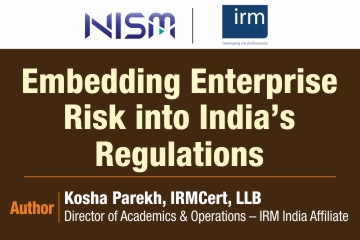Author: Denny B Justin
There are various types of markets, each catering to different products, participants, and purposes. The primary market represents the initial platform where securities, such as stocks and bonds, are issued and offered to investors directly by the issuing company or entity. It serves as the foundation for the financial market, facilitating the creation of capital for businesses and governments. This market plays a pivotal role in shaping the economy, enabling companies to raise funds for expansion, research, and development while offering investors the opportunity to acquire ownership of these enterprises.
Primary markets allow companies and governments to raise funds by issuing stocks or bonds directly to investors. This direct issuance enables them to secure capital for business expansion, infrastructure development, or other financial needs. The primary market is where securities are initially issued and offered to investors directly by the issuing company. Secondary markets involve the trading of already issued securities among investors without the involvement of the issuing company. Investors, varying from individual investors to institutional bodies such as pension funds and mutual funds, constitute the other part of the primary market. Their involvement in the primary market provides the necessary capital for new ventures to grow and expand.
Companies looking to raise capital work with investment banks, underwriters, and other financial institutions to manage the issuance of securities. Investment banks play a crucial role in guiding companies through the process of offering securities to the public. They assist in determining the offering price, drafting the prospectus, and managing regulatory requirements. The pricing of these securities is determined by various factors, including the company’s valuation, demand-supply dynamics, and prevailing market conditions. They must go through steps including due diligence, preparing a prospectus, determining the offering price, compliance with regulatory requirements, and marketing the offering to potential investors.
The key functions in the primary market are- Initial Public Offerings (IPOs), Corporate Bonds, Government Bonds, Preferred Stock, Rights Issues, Debentures, Commercial Paper, Venture Capital and Private Equity, Derivatives, Mortgage-Backed Securities (MBS). Secondary Offerings are posting the IPO, where companies might opt for additional equity offerings or bond issuances to raise further capital. These subsequent offerings serve the company’s financial base, enabling further investment in projects or debt repayment.
• Initial Public Offerings (IPOs): When a company issues its shares to the public for the first time, allowing investors to buy ownership stakes in the company. The commencement of an IPO signifies a company offering its shares to the public for the first time. This process involves meticulous groundwork, including due diligence, compliance with regulations, and pricing determination. IPOs attracts significant attention and can impact market sentiments. Investing in IPOs can offer potential for high returns if the company performs well after listing. They can also be risky as new companies might lack a proven track record, making it harder to evaluate their potential.
• Corporate and Government Bonds: Companies issue corporate bonds to raise capital. These bonds are debt securities where the issuer promises to pay back the principal amount along with interest to the bondholders. Investors who buy corporate bonds are essentially lending money to the issuing company in exchange for periodic interest payments and repayment of the bond’s face value at maturity. Bonds issued by governments to fund various projects and cover expenses are collectively known as Government Bonds. These bonds are considered low-risk investments as they are backed by the government’s ability to tax or print money. Examples include treasury bills, notes, and bonds. These are generally considered safer investments compared to stocks as they offer regular interest payments and the return of principal at maturity.
• Rights Issue and Preferred Stock: Companies offer existing shareholders the right to buy additional shares at a discounted price. This allows current shareholders to maintain their ownership percentage in the company and can raise additional capital for the company. Investing in rights issues can be a way to increase your stake in a company at a discounted price. Preferred stock pays a fixed dividend and gives holders higher priority over common stockholders in terms of dividends and asset distribution if the company goes bankrupt. It has characteristics of both equity and debt, and less volatile than common stocks.
• Debentures: They are unsecured debt instruments issued by companies or governments, with a fixed interest rate and a specific maturity date, offering fixed income but carry varying levels of risk. Unlike secured bonds, debentures are not backed by specific assets. Investing in debentures need careful risk analysis and comprehensive understanding of the creditworthiness of the issuer and prevailing interest rates.
• Commercial Paper: Commercial Papers are short-term debt instruments issued by corporations or financial institutions to raise short-term funds. They are unsecured and have maturities ranging from a few days to a year. Proper credit risk analysis shall be done for investing.
• Venture Capital and Private Equity: Venture capital are funds startups or early-stage companies in exchange for equity ownership, while private equity firms invest in more established companies with the aim of restructuring or growing them. The returns from VC and PE are higher if the company succeeds, but a higher risk of failure. Detailed market and industry analysis have to be done before investing.
• Derivatives: Derivatives are financial instruments whose value is derived from the performance of an underlying asset, index, or entity. They can be used for various purposes, including hedging against risks, speculating on price movements, or gaining exposure to assets without owning them directly. These are complex financial instruments and can be highly risky if not understood properly. They can be used for hedging or speculation but require a deep understanding of the underlying assets and market dynamics. Certain derivatives like futures and options can also be issued in primary markets.
• Mortgage-Backed Securities (MBS): When financial institutions bundle together a group of mortgages and sell them as a single security, an Mortgage-Backed Securities (MBS) is created. Investors receive payments based on the interest and principal payments from the underlying mortgages.
Investing in the primary market involves certain risks. There is a higher degree of uncertainty due to the lack of historical data and market performance. Companies also face risks associated with market reception and pricing. Factors such as economic conditions, industry trends, and market sentiment can significantly impact the success of a primary market offering. Favorable market conditions, positive economic trends, and strong investor sentiment often contribute to the success of primary market offerings, while unfavorable conditions can lead to challenges in the successful issuance of securities.
In conclusion, the primary market embodies the essence of economic growth and expansion. A country’s economic backbone is emerging companies, and understanding its mechanisms is crucial for investors looking to diversify their portfolios and for businesses aiming to fund their growth and development. Effective risk management and consultation from investment banks are essential before investing in the primary market to avoid huge losses.
Subscription Subscribe to our newsletter and receive a selection of cool articles every weeks

When people hear the term “risk management,” they often associate it with financial markets, insurance, or corporate governance. In…

As India charts its course towards Viksit Bharat, by 2047, the sophistication and depth of its financial markets are paramount.…

As investors, we often judge performance on monthly (MoM), Quarterly (QoQ) and year-on-year (YoY) statistics. It feels natural to look…